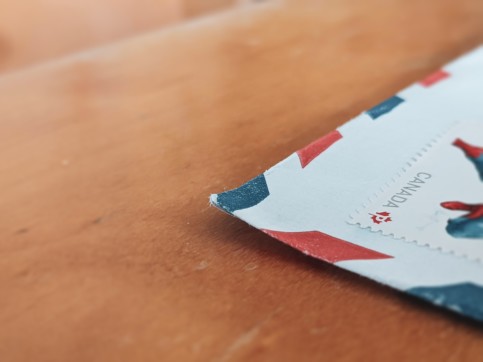4 Communications Strategy Tips for Donor Retention

A common misconception among newer nonprofit professionals is that every campaign or event is meant to attract new donors and donations. While acquisition is definitely a worthwhile goal, a sensible fundraising specialist will tell you that another top priority of any given fundraising project should be retaining the dedicated supporters that you already have.
The longer a donor gives to your organization, the more time you have to build meaningful relationships that will reinforce their long-lasting support.
Furthermore, focusing on retaining donors is also far more cost-effective than navigating a constant need to acquire more support. Consider this: acquiring new donors takes extensive marketing, SEO optimization, and far more pitching to even get them on your donation page, much less promise their support.
In contrast, an existing donor already has confidence in your organization. Your job is simply to maintain that relationship, and there are several ways to accomplish this, such as working to:
- Personalize all appeals
- Segment your audience
- Ensure communication is a two-way street
- Focus on impact storytelling
One of the best methods to increase your donor retention is to leverage your overall communication strategies. By optimizing the ways in which you connect with your current donors, you will grow their sense of appreciation for your organization that could potentially become a lifelong relationship of giving and receiving.
But first, let’s compare how the major communication channels of direct mail versus digital communications play a role in donor retention. Then we can more confidently explore a few major guidelines to put your communication tools to maximum efficiency.
Direct Mail versus Digital Communications
A prevailing myth in the nonprofit sector is that traditional mail has been phased out by the internet. Let us be the first ones to tell you that this simply isn’t true. Digital communications have broken the monopoly of direct mail as the preferred communication method, but the traditional medium is far from dead.
In fact, studies show that donors are more likely to read a direct mail appeal than an email appeal. They believe direct mail is better at telling a touching story and conveying facts than digital methods. This is especially true among older generations, who prefer hard mail and similar forms of communication, but applies to everyone—tangible mail is simply more memorable.
When used together, digital and direct communications are more beneficial than either individual method could be. This new, more effective communication strategy is referred to as integrated or multi-channel marketing, and it allows you to connect with supporters across all channels.
According to our guide to multi-channel marketing, companies that switch to integrated marketing techniques see an average 24% increase in their marketing ROI. On top of that, multi-channel marketing allows you to more easily cater your communications to specific audience segments and use each channel for different purposes.
For instance, email marketing is a great way to send consistent updates about your overall organization, such as in newsletters. Direct mail is ideal for sending personalized letters of appreciation after a donor makes a larger-than-average gift. Together, these two channels optimize the delivery of any kind of communication material.
It’s important to remember that we live in a hybrid landscape. Donors occupy a variety of different digital and physical spaces, and you must be mindful of both your traditional and virtual engagement strategies. The tips that we’ll discuss next are applicable to both print and virtual communication.
Tip #1: Personalize all appeals
Messages that begin with “dear donor” are rarely the most motivating. Not only does this generic approach reduce the worth of your individual supporters, but it could make your nonprofit come off as ungrateful. No matter if you’re sending donors direct mail or an email message, it’s critical to personalize your appeals.
Emails with personalized subject lines are 26% more likely to be opened. Compare this with other studies on personalized messages that found customized emails deliver conversion rates over 6 times higher than their generic counterparts. On the whole, consumers are far more likely to do business with an organization that offers these personalized experiences or at least takes small steps to acknowledge them as individuals.
To begin implementing this method, you can use your marketing tools to automate names in your direct mail and digital messages. You can also take this a step further by individualizing appeals with other personal details—past gift amounts, the impact of previous support, and other data that can be pulled from your nonprofit database.
All things considered, it’s almost silly to not at least experiment with customization. After all, something as simple as just writing a recipient’s name in your communications can make a marked difference in their relationship with the organization and elevate your revenue.
Tip #2: Segment your audience
Personalizing your messages is a strong first step towards driving increased retention, but there’s another way to guarantee that the right messages are being sent to the relevant donors. For example, content meant for a long-time donor may not be best suited for the inbox of a new supporter. This is where segmentation comes into play.
Segmentation allows you to group your audience by common characteristics or preferences and tailor messages accordingly. Rather than relying on general content, you’re able to create targeted messaging for each segment.
Common segments you might consider creating include new donors, recurring donors, mid-size donors, major donors, event registrants, and volunteers. Curating distinct content for each of them lets you address their particular needs and even ease them into the next stage of your nonprofit relationship.
Let’s return to the original example: content meant for a long-time donor may not be suited for the inbox of a new donor. Through segmented marketing, you can send newly-acquired supporters materials more to the speed of someone who has only just become affiliated with your organization and may not be ready to take next steps quite yet.
This Meyer Partners article on welcoming new supporters offers a few examples of best practices for this kind of messaging, such as sharing your social media account links, inviting them to upcoming events, and sending a well-rounded, warm welcome from your organization.
Note that you can also create segments based on preferences, such as if a donor only wants email communications. Taking into account their tastes and preferences greatly increases your chances for long-term retention.
Tip #3: Ensure communication is a two-way street
On the subject of needs and preferences, make sure to leave opportunities for supporters to contact you back. Communication should run both ways, and optimizing communications includes improving the channels that donors can use to give you their opinions.
With a clear and open line of dialogue between your nonprofit and your donors, you can get feedback on how to improve your relationship and your overall nonprofit strategy.
One popular method is to send surveys asking for specific feedback on recent initiatives, their overall donor experience and their communication preferences. It’s best to send these polls after a fundraising event or after a gift is made. This will catch donors while their opinions and ideas are still fresh, and the opportunity to fill out an optional survey will be more appealing.
Don’t forget to provide a specific email address that donors can use if they have any questions or concerns about their gift. They will appreciate all the steps you’ve taken to ensure that their voice has been heard, and that gratitude can manifest in a closer personal connection or even further giving.
Tip #4: Focus on impact storytelling
Now that your donors have been given the opportunity to communicate freely and honestly with you, it’s time to consider what one of their biggest questions will be. Where is my gift going? Ultimately, their decision to keep giving to your mission depends on their confidence that your organization is actually making a difference.
This is why focusing on impact is one of the best ways to increase donor retention. Your supporters are coming to you to work towards a lofty social good. Presenting them with tangible evidence that the mission is being forwarded will encourage them to continue investing in the positive change you’ve created together.
In your communications, consider providing reports of how donations were used and real stories from the community members that you serve. Explain the specific actions that your organization has taken. The three Fs—faces, facts, and figures—are good examples of evidence that will convince and inspire your supporters.
Donors will be wary of vague statements about the cause and the use of funds, and not without reason. They want to be able to quantify and see the betterment created by your organization. Better yet, they want to see where their own support fits into the mission.
In your donor thank you emails and appreciation letters, be sure to explain how a gift of the same or a similar size to their own was used. For example, “your gift of $100 provided meals for 5 families” is a concrete, visually striking statement of impact.
A successful piece of impact storytelling will simultaneously inform, move, and motivate your donors to stick with the mission and see it through to its conclusion. Even if your audacious goal is something as seemingly insurmountable as ending world hunger, tangible examples of impact will inspire supporters to help in whatever small ways they can.
Consider this: your current donors have passed through the donor journey, found your cause deserving, and pledged their support. In return, your communication strategies should be modified to ensure that they feel supported, appreciated, and acknowledged in turn.
By using these techniques to intelligently, emotionally, and personally connect with your supporters, your nonprofit will not only retain donors, but improve their experience altogether.
